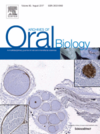Introduction
According to previous study results, hydroxyapatite particles appear to have great potential in caries prophylaxis and plaque control. The available studies often did not test only the pure active substances. Therefore, it is necessary to determine the efficacy of pure substances. Even though there are also studies for hydroxyapatite oral care products that test the pure substance, the studies focused on remineralisation processes and hypersensitive teeth. Antimicrobial and plaque-inhibiting effects of hydroxyapatite products have been proven in clinical studies in the past but they did not consider hydroxyapatite as a pure substance.
Question
How effective are the plaque management and antimicrobial properties of hydroxyapatite compared to chlorhexidine?
Material and methods
Two studies addressed this issue. The principle of the two studies is similar: Both were in situ studies in which test specimens were inserted in the oral cavity of healthy test subjects. These test specimens were worn over a specific period of time. The test subjects used different mouthwashes. Hydroxyapatite and chlorhexidine were compared in both cases. After removing the test specimen from the oral cavity, these underwent molecular biological analysis. The aim was to determine the extent to which hydroxyapatite and chlorhexidine reduced the bacterial build-up and whether the microorganisms were still vital.
Results
The results of both studies show that hydroxyapatite reduced the number of bacteria on the teeth to the same extent as a 0.2% CHX solution. While most of the microorganisms are killed off when CHX is used, hydroxyapatite prevents them from adhering to the surface and maintains the ecological balance. The microorganisms are not killed off. Hydroxyapatite forms a protective layer on the surface of the teeth, which inhibits the formation of the bacterial biofilm, and the bacteria accumulate on free hydroxyapatite particles and are therefore not available to build up on the tooth surface.
The publication of the study can be found here.
Sources: Kensche, A. et al. Efficacy of a mouthrinse based on hydroxyapatite to reduce initial bacterial colonisation in situ. Arch. Oral. Biol. 80, 18-26 (2017).
Hannig, C., Basche, S., Burghardt, T., Al-Ahmad, A. & Hannig, M. Influence of a mouthwash containing hydroxyapatite microclusters on bacterial adherence in situ. Clin. Oral Investig. 17, 805-814 (2013).



